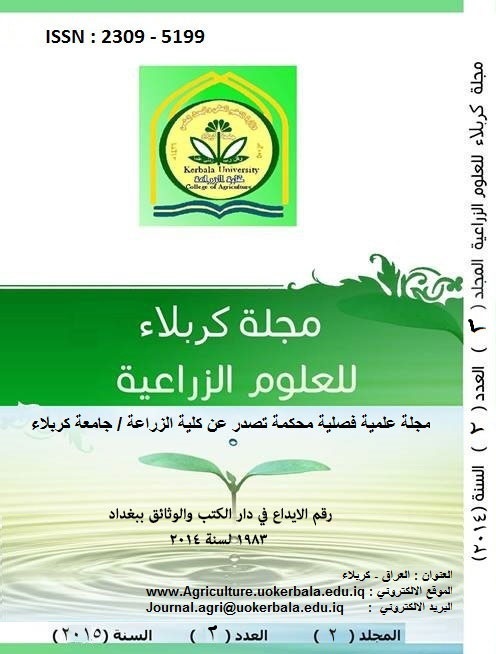In vitro Induction of bulblet production from Lilium longiflorum
DOI:
https://doi.org/10.59658/jkas.v2i2.462Keywords:
Lilium longiflorum, Benzyladenine, Naphthalene-acetic acid, in vitroAbstract
A study on the effect of Murashige and Skoog (MS) salt strength ( 1MS or ½ MS) ;concentrations of Benzyladenine (BA) ( 0 , 0.1 , 0.5 mg/l)and Naphthalene-acetic acid ( NAA) ( 0 ,0.1 ,0.2 ,0.5 mg/l) on bulblets production of Lilium longiflorum was applied at the plant tissue culture lab. belonging to Hort. Dept. /College of Agric./Univ. of Baghdad from June ,2013 to March, 2014 . Results could be summarized as follow :
Number and diameter of bulblets were not affected by MS salt strength either full strength of MS or ½ MS ,while 1 MS increased the dry and fresh weight of bulblets ( 10.4 , 9.3 g ) respectively . MS medium supplemented with BA alone was not affected on bulblet characters .However , NAA at 0.1 mg /l increased No. and fresh weight of bulblets ( 6.6 bulblets /explant and 1.06 g ) respectively . The influence of interaction between BA X NAA concentrations significantly improved the bulblets characters , BA at 0.5 mg /l x NAA at 0.1 mg / l was superior on increasing the number of bulblets ( 8.35 bulblets / explant. ) . The interaction between MS salt strength X BA levels was significant in increasing bulbletNo .; the best response was recorded at 1 MS X 0.5 mg /l of BA ( 5.9 bulblets / explant ). The interaction between MS salt strength X NAA concentrations was significant in elevating bulblets number ; 1 MS X 0.1 mg /l of NAA was the most effective treatment in increasing the number of bulblets / explant ( 7.2 bulblets / explant ).
Published
How to Cite
Issue
Section
License
Copyright (c) 2015 Copyright (c) 2024 is the Author's article. Published by the Journal of Kerbala for Agricultural Sciences under a CC BY 4.0 license

This work is licensed under a Creative Commons Attribution 4.0 International License.
Licensing Terms
All articles are published under a Creative Commons License and will be directed to the Creative Commons Attribution 4.0 International License (CC BY 4.0) That permits use, distribution, and reproduction in any medium, provided the original work is properly cited. This license also allows the work to be used for commercial purposes.
Use by both non-commercial and commercial users
This content is licensed under a Creative Commons Attribution 4.0 International (CC BY 4.0) license, permitting use by both non-commercial and commercial users. Individual users may access, download, copy, display, and redistribute the articles to colleagues, as well as adapt, translate, and text- and data-mine the content, subject to the following conditions:
- The author's moral rights, including the right of attribution and the right to protect their work from derogatory treatment, are respected.
- Where content in the article is identified as belonging to a third party, users must ensure that any reuse complies with the copyright policies of the owner of that content.
- If the article content is reused for research or educational purposes, users should maintain a link to the appropriate bibliographic citation, including the DOI and a link to the published version on the journal's website.

